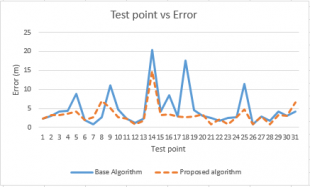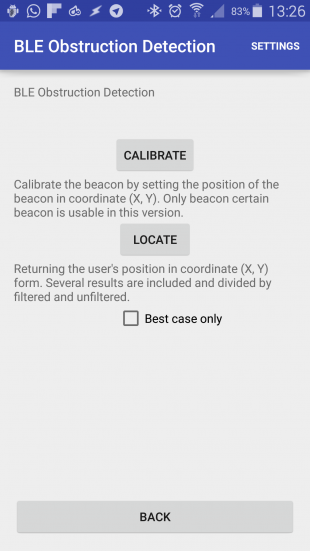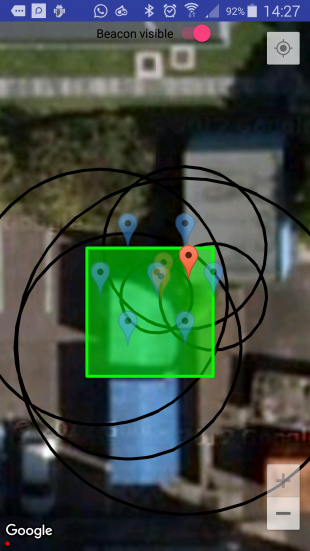Indoor location sensing systems have become very popular in recent years. Due to line of sight (LOS) restriction, GPS cannot be used for indoor positioning. The introduction of low-cost, low-power Bluetooth Low Energy (BLE) beacons for proximity detection provides a new window of opportunity with which to perform more accurate positioning. As BLE uses a 2.4-GHz signal, it tends to suffer from the same problem, which is received signal strength (RSS) degradation due to obstructions.
The problem with RSS degradation due to obstruction causes positioning using BLE beacon to be inaccurate for Non LOS (NLOS) environments. The error in distance estimation caused by the RSS degradation can be up to 10 meters, depending on the obstruction material and thickness. This research aims to improve positioning and create a BLE positioning system with good accuracy regardless of obstruction situation.
This research will achieve its aim by tackling the following objectives:
- To critically assess the differences between the RSS of LOS and NLOS environments
- To employ a novel algorithm to detect an obstruction based on received signal strength (RSS) value and stability
- To correct the distance estimation by considering the obstruction information. The signal loss due to obstruction as well as the signal loss due to the normal attenuation will be used to determine the correct distance estimation
Recent Publications:
[1] A. Juri, T. Arslan, and F. Wang, “Obstruction-aware Bluetooth Low Energy Indoor Positioning,” in ION GNSS+, Portland, 2016.
[2] A. A. Juri, T. Arslan, Y. Du and Z. Wang, "Dual scaling and sub-model based PnP algorithm for indoor positioning based on optical sensing using smartphones," 2016 International Conference on Indoor Positioning and Indoor Navigation (IPIN), Alcala de Henares, 2016, pp. 1-5.
[3] A. Juri and T. Arslan, “Bluetooth Low Energy Positioning with NLOS Correction Using Statistical Techniques,” in 2016 International Navigation Conference (INC), Glasgow, 2016.
[4] X. Hou, T. Arslan, A. Juri, and F. Wang, “Indoor Localization for Bluetooth Low Energy Devices Using Weighted Off-set Triangulation Algorithm,” in ION GNSS+, Portland, 2016.
[5] X. Hou, T. Arslan and A. Juri, “A Received Signal Strength based Self-adaptive Algorithm Targeting for Indoor Positioning,” in 2016 International Navigation Conference (INC), Glasgow, 2016.
[6] Y. Du, T. Arslan and A. Juri, "Camera-aided region-based magnetic field indoor positioning," 2016 International Conference on Indoor Positioning and Indoor Navigation (IPIN), Alcala de Henares, 2016, pp. 1-7.
[7] Y. Du, T. Arslan, and A. Juri, “A Region-based KNN Algorithm for Magnetic Field Indoor Positioning,” in 2016 International Navigation Conference (INC), Glasgow, 2016.




